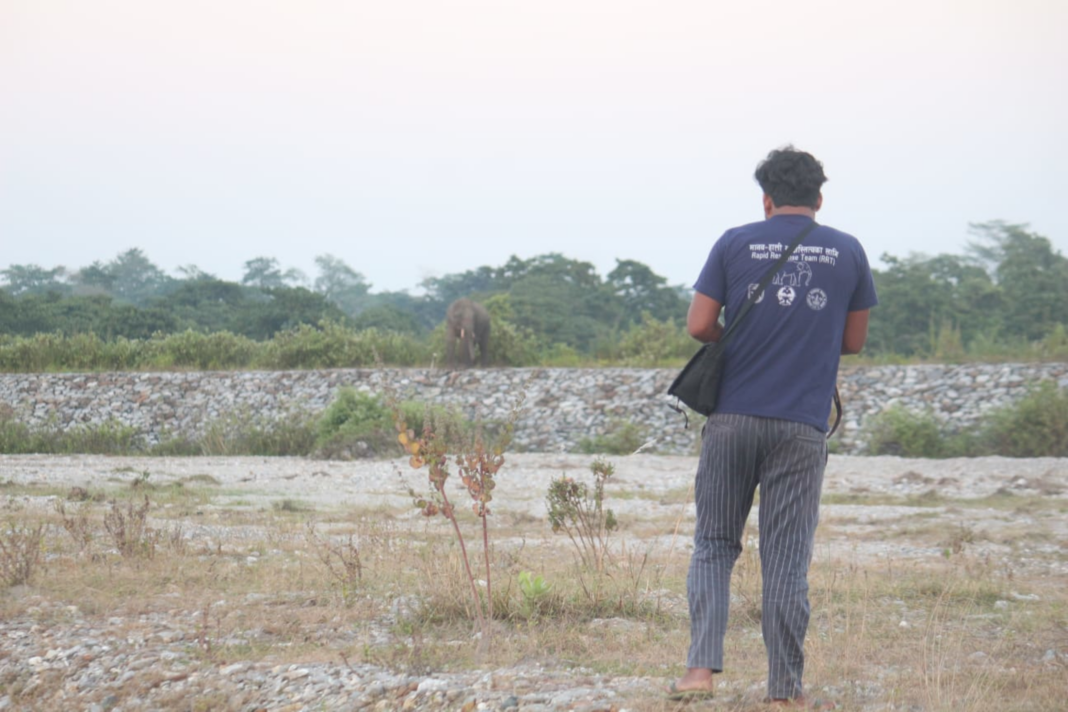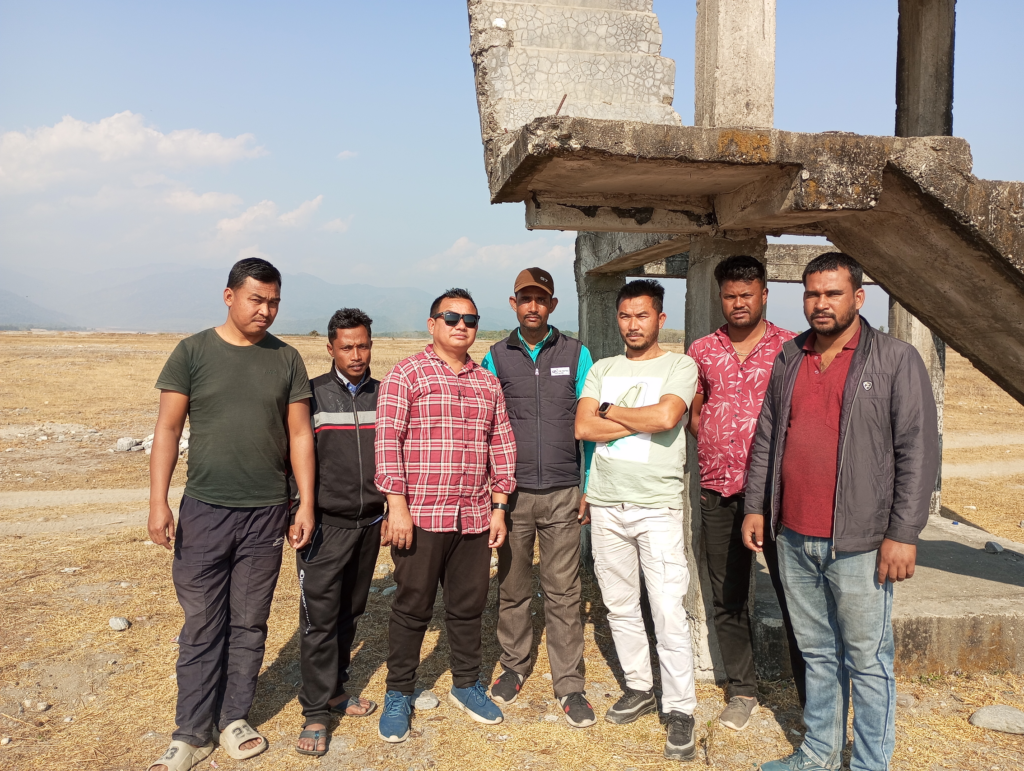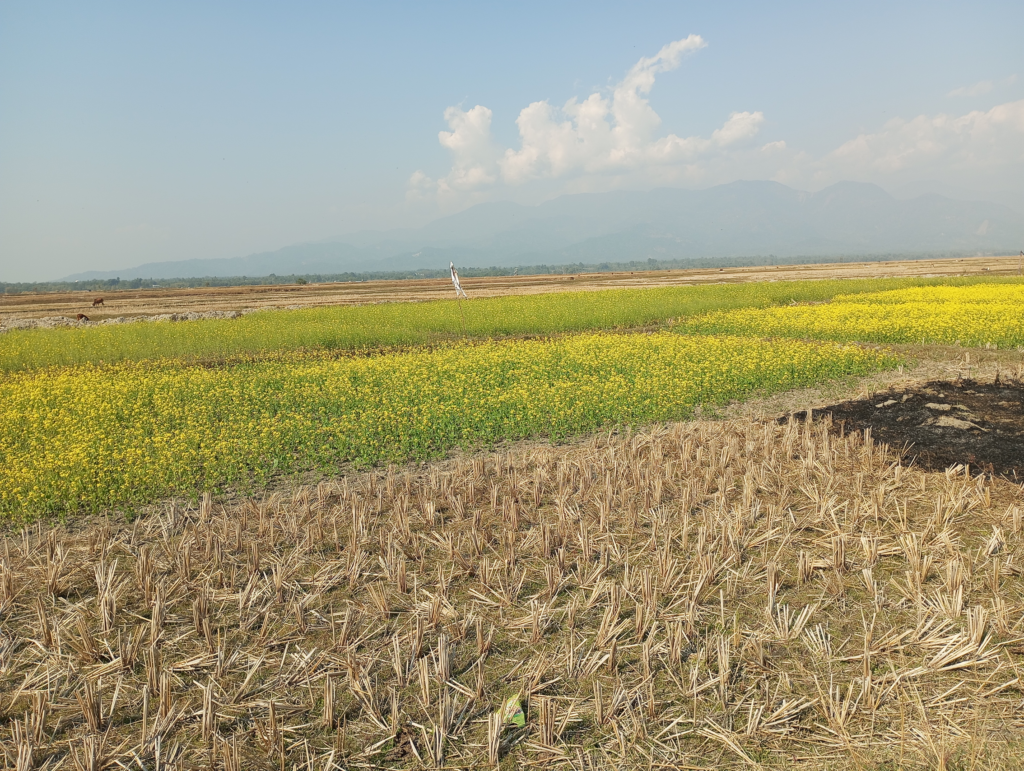Protecting the pachyderms (as well as the humans and crops) takes teams of brave, determined volunteers.
It’s a winter morning in India’s picturesque Kolabari village. To one side of a road stretches a golden expanse of mustard fields; on the other, green tea bushes sway gently. Nearby, 36-year-old farmer Gobind Mallick stands in front of his granary, which is filled with bags of rice. Mallick wears a smile, grateful that his hard work paid off — this year, he harvested about fifteen tons of rice from his twenty-one-acre farm, a marked contrast to previous years, where he was lucky to salvage enough for personal consumption. He knows exactly who to credit. “My crops thrived this season,” he explains, “thanks to the watchfulness of the Rapid Response Team (RRT).”
He’s referring to the so-called elephant chasers, groups of volunteers who, astride motorcycles and armed with flashlights and horns, patrol this and other villages, driving away elephants to areas with fewer people and fewer farms. This community of 450 households has grappled enough with human-elephant conflicts.
Twenty-nine-year-old villager Amit Raut leads the Indian contingent of the RRT, which also has a branch in Nepal along the elephants’ migratory route. “Our goal is to reduce human and animal casualties in these conflicts and protect crops as best as we can,” he explains. But not just crops — people too. Thirty-eight people have died in elephant encounters in the region in the past five years, he says, though no elephants have been killed. And the elephants have damaged significant paddy and maize crops as they ransack farms for food.
Kolabari forest landscape falls under the Naxalbari block in West Bengal, among the few settlements close to the India-Nepal border. It lies along a migratory route that elephants have traversed for centuries, if not millennia.
The area is renowned for its rich biodiversity, encompassing numerous national parks, wildlife sanctuaries, and forest reserves. Elephants predominantly travel in herds, seeking water and food, along designated pathways known as elephant corridors. The Ministry of Environment in India has identified over 150 elephant corridors nationwide, including those in Assam, Kerala, and Karnataka, within this region. Because elephants have a remarkable memory, they travel the same routes for generations.
Elephants set out from Assam in India and make their way through the lowlands of Bhutan and North Bengal to Nepal, seeking food and water. As more humans have moved into what has historically been elephant territory, conflicts between people and elephants has meant many lost lives and livelihoods over generations.
Newton Karki is the Nepalese counterpart of Amit Raut, leading his region’s Rapid Response Team. Supported by fifteen committed volunteers, Karki’s RRT undertakes nightly patrols along the Nepalese border, where, across the Mechi River, the villagers of Bahundangi, Nepal, face the same problem as their counterparts in Kolabari.
RRT members on both sides of the Mechi River work in collaboration, Karki says. “We coordinate through phone calls and share information with each other on the animal movement.” Sometimes, they’re dealing with a single elephant, he says, other times, it’s a herd of fifty.
Now in his early thirties, Karki remembers fondly the days he spent in his childhood alongside the Mechi River, which flows by his village. “I would watch the elephants raise huge dust storms as they moved in herds along the banks of the river,” he says. But then, they would traverse the river, and frequent clashes would ensue between elephants and the people living in his community of 1,800 homes. Elephants may just swing their trunks at people if they’re finding them irritating, but if they’re feeling seriously threatened, they can also trample people.
While our service is voluntary, receiving additional resources like good quality torches, raincoats, and better vehicles would greatly encourage and motivate us to work in all weather conditions, especially during the darkest hours of the night.
– Amit Raut, leader of the Indian contingent of the RRT
Villagers, in response, sometimes built deep trenches or installed electric fences, injuring or killing elephants. Because elephants are revered in Hindu tradition, these conflicts were complex.
The RRT aims to deter elephants before there’s any conflict. Outside the village, volunteers who spot elephants light firecrackers, blow horns, light torches [flashlights], or yell, Karki explains. The noise also signals to villagers to stay indoors while the volunteers chase elephants away from crops. Like their Indian counterparts, the Nepalese volunteers ride motorcycles and are especially active during the paddy growing season, when the elephants, particularly fond of paddies, are most likely to be seeking a human-grown meal.
The Rapid Response Teams on both sides of the border are a relatively new tactic to deter elephants. The groups have been functional for about a year and a half, says Shankar Luitel Chettri, an elephant conservationist and Bahundangi resident who helped establish and train the volunteer groups alongside Arjun Kumar Karki and Ramesh Thapa. “And they have been mostly successful in their mission.”
There have been challenges, even apart from their oversized adversaries. The night patrols on motorbikes require fuel, Amit Raut explains, and it's the volunteers who cover the expenses. “While our service is voluntary,” he says, “receiving additional resources like good quality torches, raincoats, and better vehicles would greatly encourage and motivate us to work in all weather conditions, especially during the darkest hours of the night.” But there’s limited governmental and local administrative support.
The job also consists of inherent risks. Raut suggests that life insurance for the volunteers would be beneficial, a point that underscores the danger. Ujyalo Nepal, a non-profit organization in Nepal, has offered a US$3,760.28 life insurance policy to the members of RRT in Bahundangi, according to Shankar Luitel Chettri. Raut is hoping a donor might step up to secure life insurance for him and his team.
Technology helps both the teams keep track of elephant routes. In Nepal, RRT members rely on alert apps such as Hathi Ayo. Raut’s team in India uses HEC Alerts. These elephant trackers have also set up WhatsApp groups to exchange important details about elephant whereabouts and provide damage assessments.
This cross-border collaboration not only has decreased elephant-related damage, but also has also eliminated elephant and human casualties. According to both the RRT unit heads, no animals have been killed by humans in either of the border villages since they began their patrols.





